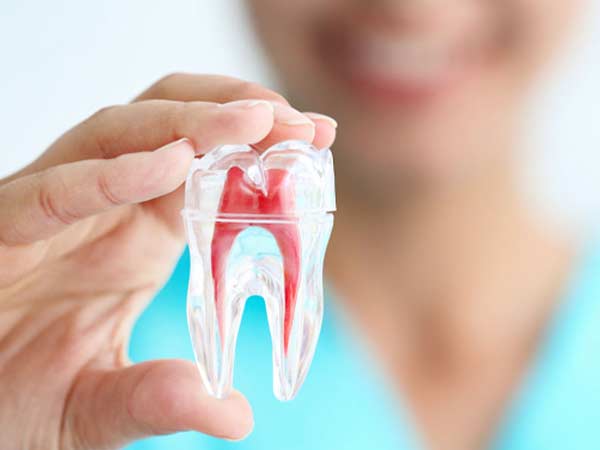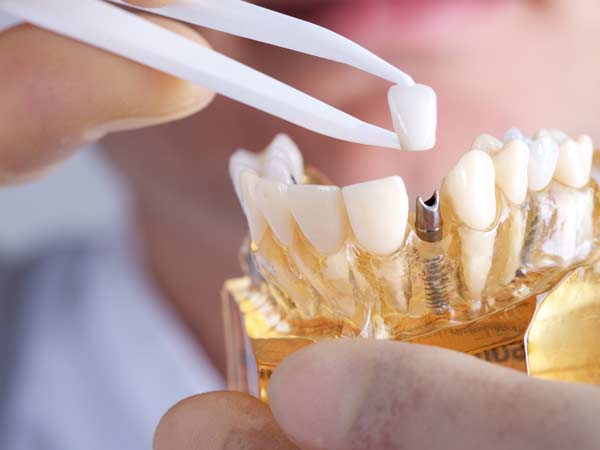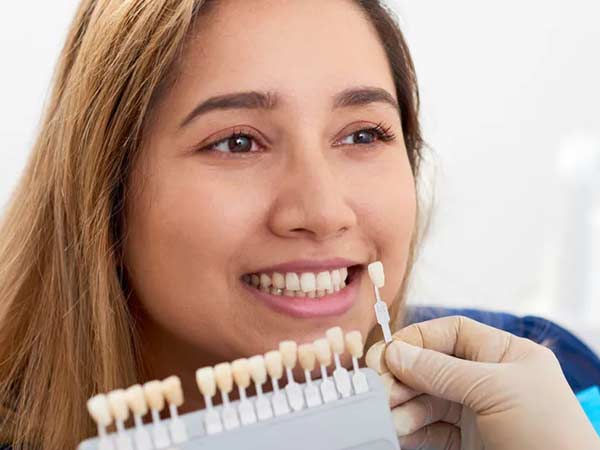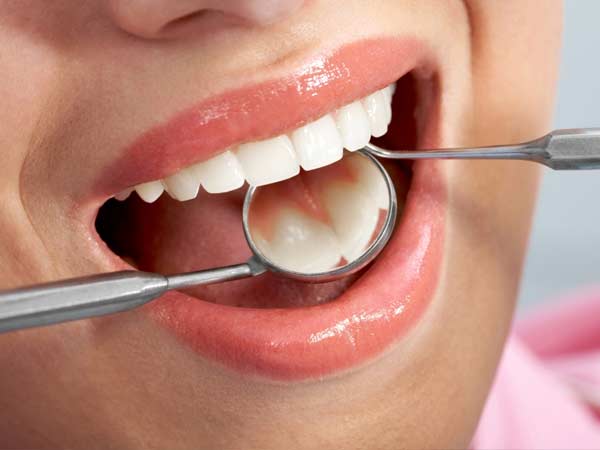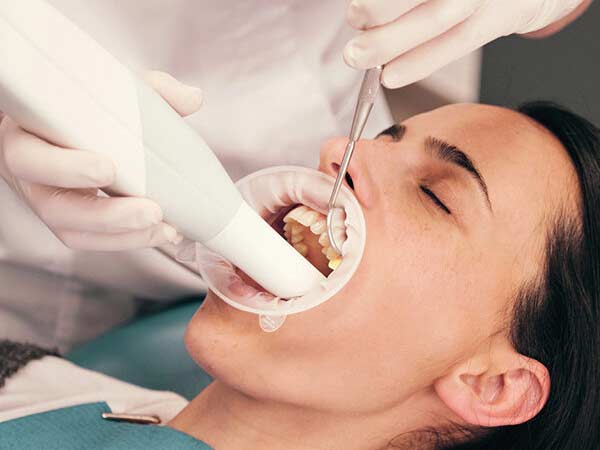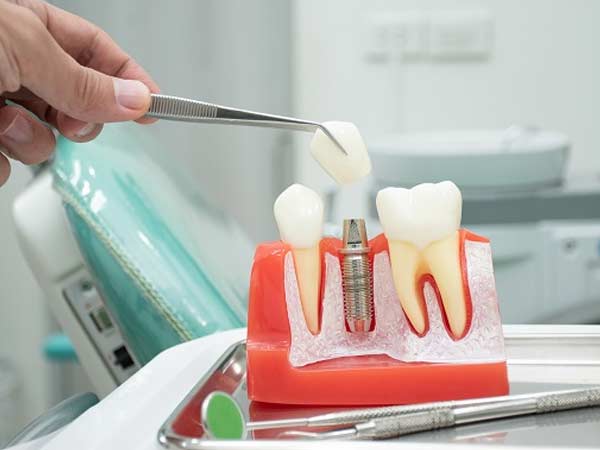 Teeth whitening- who doesn’t like a bright smile? Whitening is a one-time procedure performed by a dentist. Teeth whitening involves bleaching your teeth to make them lighter. It can’t make your teeth brilliant white, but it can lighten the existing colour by several shades.
Teeth whitening- who doesn’t like a bright smile? Whitening is a one-time procedure performed by a dentist. Teeth whitening involves bleaching your teeth to make them lighter. It can’t make your teeth brilliant white, but it can lighten the existing colour by several shades.
It is amongst the most common and widely adopted cosmetic procedure .. Individuals with yellow tones to their teeth — as opposed to gray tones — respond best. It relatively inexpensive and most effective way to enhance a faded smile in just an hour.
More and more people are paying for brighter, whiter teeth. But does teeth whitening work and is it safe? Here are the answers to common questions about the treatment.
What are Your Whitening Options?
- Three major teeth whitening options are available today. All three rely on varying concentrations of peroxide and varying application times.
In-Office Whitening
- Significant color change in a short period of time is the major benefit of in-office whitening. This protocol involves the carefully controlled use of a relatively high-concentration peroxide gel, applied to the teeth by the dentist or trained technician after the gums have been protected with a paint-on rubber dam. Generally, the peroxide remains on the teeth for several 15 to 20 minute intervals that add up to an hour (at most). Those with particularly stubborn staining may be advised to return for one or more additional bleaching sessions, or may be asked to continue with a home-use system.
Professionally Dispensed Take-Home Kits
- Many dentists are of the opinion that professionally dispensed take-home whitening kits can produce the best results over the long haul. Take-home kits incorporate an easy-to-use lower-concentration peroxide gel that remains on the teeth for an hour or longer (sometimes overnight). The lower the peroxide percentage, the longer it may safely remain on the teeth. The gel is applied to the teeth using custom-made bleaching trays that resemble mouth guards.
- Over-the-Counter Products
- The cheapest and most convenient of the teeth whitening options, over-the-counter bleaching involves the use of a store-bought whitening kit, featuring a bleaching gel with a concentration lower than that of the professionally dispensed take-home whiteners. The gel is applied to the teeth via one-size-fits-all trays, strips or paint-on applicators. In many cases this may only whiten a few of the front teeth unlike custom trays that can whiten the entire smile.
What happens during teeth whitening?
- Laser whitening, also known as power whitening, is another type of teeth whitening system that a dentist can provide. A bleaching product is painted onto your teeth and then a light or laser is shone on them to activate the whitening. Laser whitening takes about an hour.
- If you have your teeth whitened you’ll first need to make 2 to 3 visits to the dental surgery.
- The dentist will take an impression of your teeth to make a mouth guard and tell you how to use it with a bleaching gel. Then, using your mouth guard at home, you regularly apply the gel for a specified period of time over a few weeks. Some whitening gels can be left on for up to 8 hours at a time, which can shorten the treatment period.
What are the risks of home kits and salon teeth whitening?
Some home kits don’t contain enough whitening product to be effective. Also, if a dental professional isn’t doing the whitening, the mouth guard provided may not fit properly so some of the bleaching gel may leak out onto your gums and into your mouth, causing blistering and sensitivity.
Teeth whitening carried out in beauty salons by untrained staff or staff without dental qualifications puts your oral health at risk and is also illegal.
How do I find out about getting my teeth whitened?
We will advise you whether whitening is right for you. It may be that teeth whitening isn’t suitable, for example if you have gum disease or crowns.
Is teeth whitening permanent?
Teeth whitening isn’t permanent. It can last from a few months to up to 3 years – it varies from person to person.
- The whitening effect won’t last as long if you smoke or drink red wine, tea or coffee, which can all stain your teeth.
Will teeth whitening work on false teeth?
Teeth whitening doesn’t work on dentures, crowns, fillings or veneers.
What are the risks of teeth whitening?
No matter what treatment you use, there’s a chance your gums will be sensitive to the chemicals used in teeth whitening, particularly if you already have sensitive teeth. There’s also a chance of burns to gums and some of the whitening kits used at home can harm tooth enamel.
How White Can You Go? A Matter of Esthetics
Results are subjective, varying considerably from person to person. Many are immediately delighted with their outcome, while others may be disappointed
Shade Guides
In the dental office, before-and-after tooth color is typically measured with shade guides. These are hand-held displays of wide ranges of tooth colors. (Dentists also use them in choosing crown and other restoration shades.)
The standard-setter among them has long been the Vitapan Classic Shade Guide. This shade guide standard incorporates 16 shades, systematically arranged from light to dark into four color groups, and provides a universal tooth-color terminology.
While whitening can occasionally lighten tooth color by nine or more shades, most of those who bleach their teeth are likely to see a change of two to seven shades.
Risks
Teeth whitening treatments are considered to be safe when procedures are followed as directed. However, there are certain risks associated with bleaching that you should be aware of:
- Sensitivity: Bleaching can cause a temporary increase in sensitivity to temperature, pressure and touch. This is likeliest to occur during in-office whitening, where higher-concentration bleach is used. Some individuals experience spontaneous shooting pains (“zingers”) down the middle of their front teeth. Individuals at greatest risk for whitening sensitivity are those with gum recession, significant cracks in their teeth or leakage resulting from faulty restorations. It has also been reported that redheads, including those with no other risk factors, are at particular risk for tooth sensitivity and zingers. Whitening sensitivity lasts no longer than a day or two, but in some cases may persist up to a month. Some dentists recommend a toothpaste containing potassium nitrate for sensitive teeth.
- Gum irritation: Over half of those who use peroxide whiteners experience some degree of gum irritation resulting from the bleach concentration or from contact with the trays. Such irritation typically lasts up to several days, dissipating after bleaching has stopped or the peroxide concentration lowered.
- Technicolor teeth: Restorations such as bonding, dental crowns or veneers are not affected by bleach and therefore maintain their default color while the surrounding teeth are whitened. This results in what is frequently called “technicolor teeth.”
Maintaining Your Results
To extend the longevity of newly whitened teeth, dentists are likely to recommend:
- At-home follow-up or maintenance whitening – implemented immediately or performed as infrequently as once a year.
- Avoiding dark-colored foods and beverages for at least a week after whitening.
- Whenever possible, sipping dark-colored beverages with a straw.
- Practicing excellent oral hygiene – brushing and flossing after meals and at bedtime.
Caveats
In addition to the aforementioned risk factors, a number of caveats should be considered before undergoing teeth whitening:
- No amount of bleaching will yield “unnaturally” white teeth.
- Whitening results are not fully seen until approximately two weeks after bleaching. This is an important consideration if you are about to have ceramic restorations and want to be sure the color matches that of your newly bleached teeth.
- If cosmetic bonding, porcelain veneers or other restorations are part of your treatment plan, they should not be placed until a minimum of two weeks following bleaching to ensure proper adhesive bonding, function and shade matching.
- To avoid the technicolor effect, tooth-colored restorations will likely need replacement after bleaching.
- Recessed gums often reveal their yellowish root surfaces at the gum line. That yellow color has proven difficult to bleach.
- Pregnant or nursing women are advised to avoid teeth whitening. The potential impact of swallowed bleach on the fetus or baby is not yet known.
Keep in mind that whitening results are not permanent, meaning that if you want to maintain your whitened smile, you’ll need to continue getting treatments as the effects wane.



